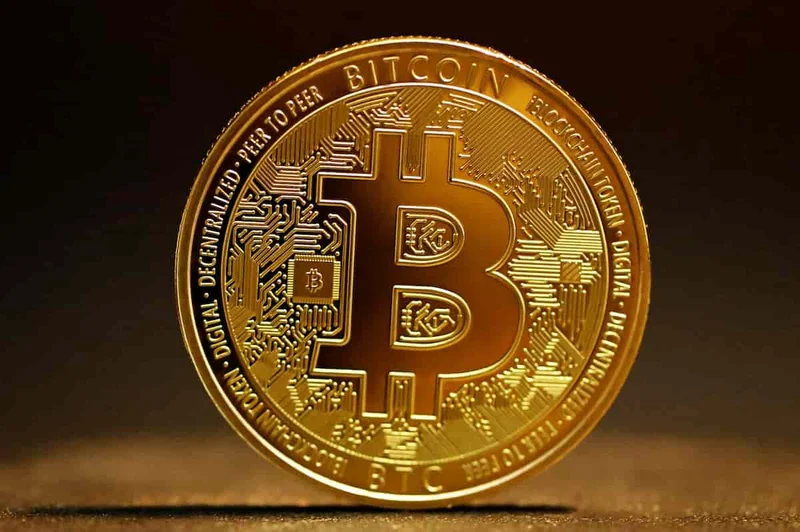Bitcoin Price Today: JPMorgan's Key Threshold and What We Know
What Happens When the "Floor" Cracks?
JPMorgan's analysts, led by Nikolaos Panigirtzoglou, have thrown down a marker: $94,000. That's supposedly Bitcoin's "pain threshold," the level where mining economics make holding, not selling, the smarter play. The argument, as reported by The Block, hinges on production cost. As mining difficulty rises, so does the all-in cost to mine a Bitcoin – currently around $94,000, up from $92,000.
The logic is simple: miners won't sell below their cost. Production cost, therefore, acts as a floor. But floors can crack. This isn't physics; it's economics, driven by human behavior. What happens when the "unbreakable" support level gives way?
The Miner's Dilemma
JPMorgan’s analysis presents a tidy picture: spot price hovering just above production cost, miners’ operating margins thin, and limited room for further downside. It’s a reassuringly stable equilibrium. But equilibrium assumes rational actors. Miners, like any business, face debt, expansion plans, and the ever-present need to cover overhead.
Imagine a scenario: Bitcoin dips below $94,000. Not briefly, but for a sustained period. Miners, facing mounting losses, have a choice: HODL and hope for a rebound, or liquidate to cover their obligations. JPMorgan suggests the latter becomes less appealing as the price drops further. But that assumes all miners are equally capitalized and equally risk-averse.
I've seen this play out in other sectors (energy comes to mind). A supposed "floor" based on production cost crumbles as companies, one by one, decide survival trumps theoretical long-term gains. The selling pressure from distressed miners could drive the price down further, creating a self-fulfilling prophecy. I wonder if JPMorgan accounted for the cascading effect of miner capitulation in their model.
The Golden (Bitcoin?) Goose
JPMorgan also throws out a $170,000 price target within 6-12 months, based on a volatility-adjusted comparison with gold. Bitcoin, they argue, consumes 1.8 times more risk capital than gold but has a smaller market cap ($2.1 trillion vs. $6.2 trillion). Closing that gap implies a 67% increase in Bitcoin's market cap.
This is where I get skeptical. Comparing Bitcoin to gold is like comparing apples to… well, not oranges, but maybe high-tech, blockchain-based oranges grown on Mars. Gold has thousands of years of history as a store of value. Bitcoin has a decade. Gold's volatility is, shall we say, somewhat less dramatic.

The volatility adjustment is supposed to account for this, but it feels like a hand-waving exercise. (These kinds of volatility-adjusted comparisons always do.) The underlying assumption—that Bitcoin should trade at a certain ratio to gold—is, in my view, highly questionable.
And this is the part of the report that I find genuinely puzzling. JPMorgan rightly identifies the mining cost floor, a tangible, economically-driven factor. But then they pivot to a theoretical, model-driven price target based on a shaky analogy. The discrepancy is… striking.
They even walked back a previous, more aggressive target. Last month, Panigirtzoglou suggested $165,000 by year-end. Now, it's a 6-12 month target, "given recent liquidations and very weak sentiment." A bit of a climbdown, wouldn’t you say? As reported by NewsBTC, JPMorgan has identified key thresholds for Bitcoin's price.
Mining Cost: A Solid Foundation or Shifting Sands?
JPMorgan presents the $94,000 level as a statistically grounded region, not a precise line in the sand. Fair enough. But the underlying assumption—that mining cost remains relatively stable—deserves closer scrutiny.
What if network difficulty doesn't keep the estimated production cost around $94,000? What if technological advancements (more efficient mining rigs, cheaper energy sources) drive the cost down? Or what if regulation or geopolitical events disrupt mining operations, forcing some miners offline and altering the supply-demand dynamic?
These are wild cards, but they're not black swans. They're potential disruptions that could invalidate JPMorgan's floor. The model, while elegant, relies on assumptions that are subject to change. And in the volatile world of crypto, change is the only constant.
So, What's the Real Story?
JPMorgan's analysis is a useful starting point, but it's not gospel. The $94,000 "floor" is more of a guideline, a zone of increased risk sensitivity for miners. The $170,000 target? A theoretical exercise based on a questionable comparison. The real story, as always, is more complicated—and less predictable—than any model can capture.
